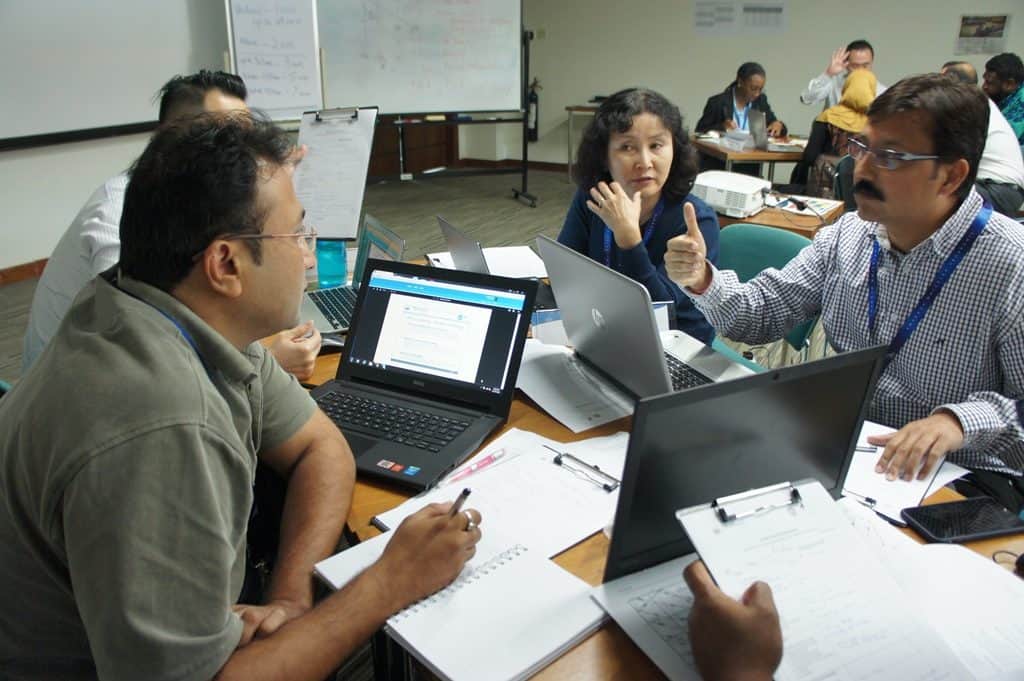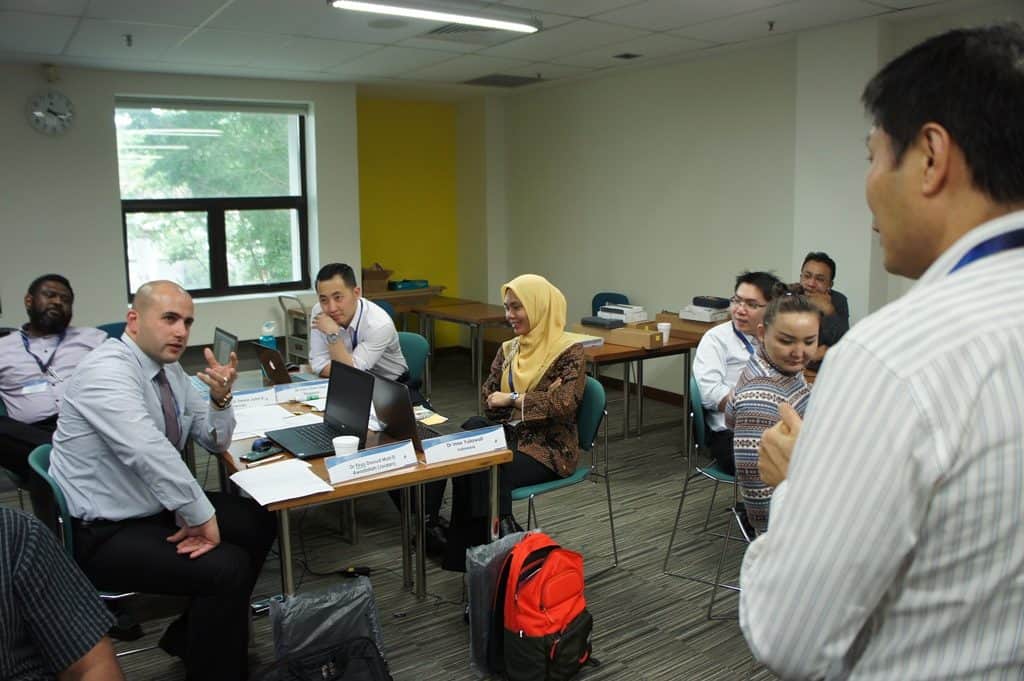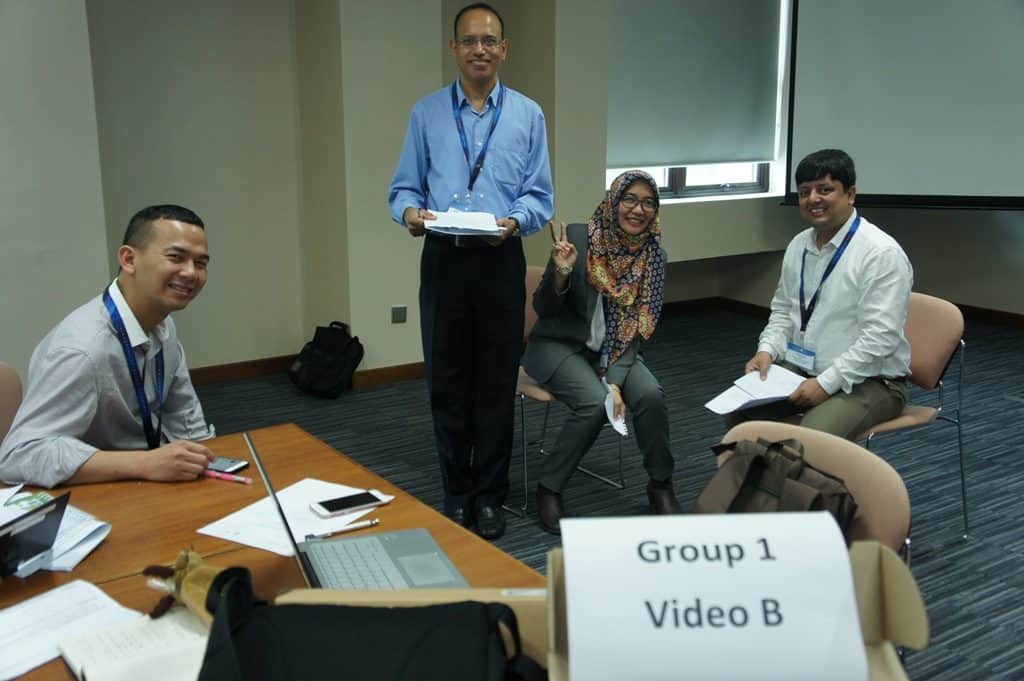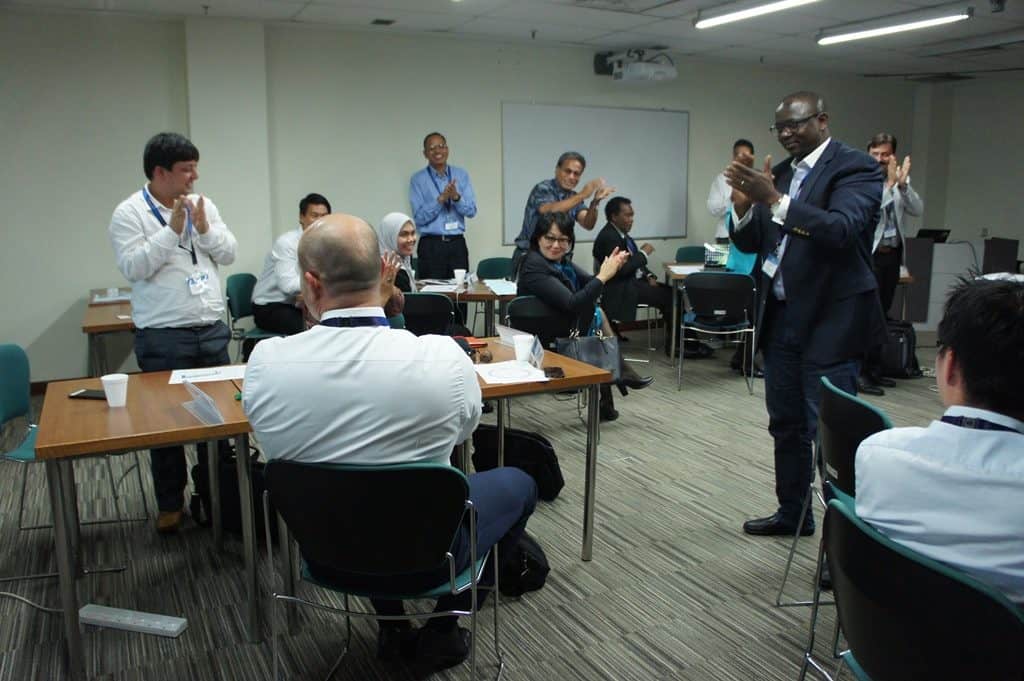Introduction
To support its ‘No Country Left Behind’ initiative, ICAO developed the TRAINAIR PLUS Programme (TPP), a programme that uses a Competency-Based Training (CBT) methodology to harmonize and achieve baseline training standards in training development. Since its inception in 2012, 92 members have joined ICAO’s TPP network, echoing the success of the programme. CBT is used by TPP members to attain and demonstrate skills that meet industry standards.
Among the strengths of CBT are that it emphasizes practice and the consolidation of skills to advance fluencies, and it lessens the cognitive loads placed on information processing. Studies have shown that CBT is effective in developing skills with clear and specific content, such as technical and operational skills. It is, however, less effective in developing the relationship and process-driven skills used in management and knowledge-creation.
CBT should not be used as the sole training methodology. The success of any form of training is likely to be a hybrid of different training methodologies. In an industry where inter-State training of personnel is common, and the safety of air travel depends on the joint-capabilities of all States, the social and cultural aspects of training cannot be understated.
For work that involves autonomous analysis, judgement and decision-making, a more sociocultural approach that takes advantage of the diverse backgrounds, unique knowledge and rich experiences of its participants would be beneficial. This post shares the Singapore Aviation Academy’s (SAA) experience in enhancing CBT through a sociocultural approach.

The case for Enhancing CBT through a Sociocultural Approach
Trainees with diverse cultural backgrounds and abilities bring unique knowledge and experiences to the classroom. These attributes, when shared in the social context of the classroom, create learning communities where every learner benefits. This is especially relevant given the complex and changing dynamics of knowledge and skills needed in the aviation industry.
The subjectivity and process-driven traits inherent in the sociocultural theory complement the prescriptive, objective and outcome-driven traits inherent in CBT. Supplementing CBT with applications of the sociocultural theory would be particularly useful when training those who require decision-making and problem-solving skills to handle real-life situational uncertainty.
A key strength of the sociocultural theory is its wide-ranging applicability to training and development. There are many strategies that have their influence in a socially-inclined approach. Examples include cooperative learning, collaborative learning, role playing, guided participation, reciprocal teaching, dynamic assessment, cognitive apprenticeship and peer-assisted learning.
Applications of the Sociocultural Theory
Four training strategies that have their influences in the sociocultural theory are discussed below:
Cooperative Learning
Cooperative learning refers to learning situations where small groups of trainees are encouraged and motivated to cooperate and help one another learn in order to interact, share information, solve problems or complete tasks collectively to achieve conditional rewards or reach common goals. With this strategy, there is group and individual accountability.
Collaborative Learning
In collaborative learning, trainees learn together by drawing on one another’s knowledge and skills, working together to solve a problem or complete a task. The emphasis is on building understanding as a group as members interact. In this approach, the trainees tend to have more autonomy, as the trainer mainly plays the role of a facilitator.
Role-Playing
Role-playing supports learners as they test roles and skills beyond their current abilities and acquire higher levels of competence. Studies have also shown that role-playing results in improved memory skills, metacognition, perspective-taking and problem-solving abilities.
Guided Participation
In guided participation, support is provided to enable trainees to participate in expert activities in increasingly expert ways. Guidance is provided to trainees to enable a task to be performed successfully and independently by adjusting the assistance to fit the current level of performance, by breaking the task into small parts, directing trainees’ attention, and giving general and specific instructions to solve problems. The guidance is then gradually removed as trainees progress towards independence and new ones are introduced to phase in the next stage of learning.

SAA has introduced the applications of the sociocultural theory to complement our courses that are developed using the CBT methodology. The following two case studies highlight this approach.
Case Study 1: Personnel Licensing (PEL) System ICAO Training Package (ITP)
The PEL System ITP aims to equip civil aviation authorities with the competencies to set up and manage an effective PEL system in accordance with Annex 1 to the Chicago Convention and ICAO Manual of Procedures for Establishment and Management of a State’s Personnel Licensing System (Doc 9379).
Delivered through a blended approach, the course consists of a two-day eLearning lesson that provides participants with the foundation knowledge needed to establish a PEL office, and is followed by five days of classroom training on operational requirements. Since its inception at the end of 2015, 48 participants have attended the PEL ITP. This course won the “highest number of RTCE ITPs delivered” during the recent ICAO TRAINAIR Plus Global Symposium, attesting to the popularity of the course.
Applications of Sociocultural Theory
Cooperative learning through games
Following the two-day eLearning lesson where participants individually learned the basics of establishing a PEL office, the first activity for the classroom session is a quiz-game. Participants are seated in groups and are allowed to discuss the questions before coming to an agreement on the answers to the questions. Subject areas include the action of personnel licensing, the licensing authority, as well as the regulatory system governing personnel licensing. The group with the highest number of correct answers wins the game.
Incorporating cooperative learning through game-playing has many benefits. Participants have the opportunity to elaborate and discuss one another’s answers, building a joint understanding that is greater than what they would have produced individually. Game-playing increases motivation by allowing participants to work together to gain rewards for their groups. The methodology is also a good strategy for breaking the ice and allows trainees to quickly get to know one another, paving the way for participants to interact and work with one another easily for the rest of the course.
Collaborative learning through case studies
The five-day classroom session is anchored on a set of case studies involving a fictitious State Civil Aviation Authority that needs to set up its PEL office. Every case study narrates the challenges faced by the CAA, the resources it has, and the objectives it has to meet. Participants assume the role of PEL Manager in the case studies. They have to identify potential problems and determine the course of action to be taken when they are faced with requests from airlines and maintenance organizations. Requests may pertain to the licensing of flight crew and non-flight crew, conversion of foreign licenses and recognition of medical certificates.
Participants work in groups, drawing on their past experiences, applying what they have learned in the preceding lessons to reach common consensus for their proposed answers. Instead of providing answers, the trainer plays a facilitation role, posing thought-provoking questions to stimulate participants’ thinking. When the groups are presenting their responses to the case studies, the class members are encouraged to provide their views. The trainer summarizes the responses and gives his views towards the end of each case study.
Outcomes
When used with mixed-ability groups, both cooperative and collaborative learning methods have proven to be effective in reducing the competency gap that develops over time, between high and low ability participants. Both methods also develop a positive impact on interpersonal relationships with participants from different countries and ethnic backgrounds. The motivational level of participants remained high throughout the course. All of this led to better engagement of the participants and the achievement of learning outcomes.
High Level of Engagement
“I finished my e-learning sometime before the course. The e-learning was interactive and allowed us to learn at our own pace. The game at the start of the class was good …was a fun way to recap the material, so that all of us were on the same page, using the same lingo as we go through the course. Made a potentially dry topic fun.” ~ Oi Tze Liang, Singapore
The next run of “Personnel Licensing (PEL) System ICAO Training Package (ITP)” will be conducted at SAA from 23 to 27 October 2017. Interested participants will have to complete PEL System Part One (eLearning) prior to attending this course. This course can also be conducted onsite upon request.

Case Study 2: IAASM-SAA Postgraduate Certificate in Aviation Medicine for Medical Examiners and Assessors Compliant Training Package (CTP) – undergoing ICAO technical validation
This course is intended for physicians who wish to be trained as medical examiners or assessors. Medical examiners and assessors are required to competently apply medical requirements of ICAO Standards and Recommended Practices (SARPs), perform effective examinations, critically evaluate medical documents and make medical fitness conclusions for ICAO Class 1, 2 and 3 Medical Assessments for applicants presenting with any spectrum of medical conditions. The course syllabus is designed to meet the aviation medicine training guidelines stipulated in the ICAO Manual of Civil Aviation Medicine (Doc 8984). In 2016, 23 physicians from 16 States attended this course, which was delivered through blended learning which comprised one-day eLearning and 10-day classroom training.
Applications of Sociocultural Theory
Guided Participation through Evolving Case Studies
Evolving case studies were used extensively to train the participants to assess the flight safety risk associated with various medical conditions. Participants were brought through the process of dealing with applicants with various medical issues. This called for them to analyse issues and make decisions as they accumulated information about each case, thus simulating real-world situations in a clinical setting.
Given a brief about an applicant’s medical information, a decision was to be made if the medical conditions posed a risk that was significant enough to impact the applicant’s medical fitness. The participants appraised the reports for completeness and relevance, and determined if relevant information was missing. This was shared with the rest of the class. Groups often provided different answers, which pointed to the many ways a case could be viewed. The trainer then revealed new information to progress the scenario, which the participants synthesised with the information they already possessed. If a decision about medical fitness could not be made, the process was repeated until a decision could be made. To guide their learning, the trainer posed questions and highlighted circumstances or parts of the reports that needed attention throughout the process.
The guidance provided by the trainer decreased with each case study as the participants acquired greater expertise and confidence in assessing an applicant’s aeromedical fitness. Using this strategy, the participants socially co-constructed the approach for a risk-based assessment.
Role-Playing
Conducting a medical examination on an applicant is a dynamic and multifaceted process. To appreciate the nature of this process, participants formed groups to produce videos of a proper medical examination encounter with an applicant of a certain persona. The persona helps to contextualise the relevant challenges or issues that should be addressed during the encounter. The approaches that were adopted by the respective groups were co-constructed in the process of writing the script and organising the sequence of actions within the video. The task compelled all the group members to brainstorm, visualise and flesh out in detail how to demonstrate the competency in their videos.
Producing videos provided additional motivation and realism to the exercise. Participants were also brought through a process of perspective-taking as they crafted the response of the applicant to how the examiner conducted the examination.

Outcomes
Feedback from the participants reflected an appreciation of the course activities which were grounded in sociocultural theory:
Valued Learning Experience
“This is one of those courses which excite you, train you, teach you, motivate you and empower you – and all that within a very relaxed ambience with focused faculty and significant opportunities to participate in such a way that makes you confident… I believe this course can be a benchmark for future courses given its high quality content, hands-on way of methodology and also the way it has been designed.”~ Dr Kirti Mohan Marya, United Arab Emirates
Acquiring Complex Skills
“Making a video of a simulated history-taking and physical examination helps to make it more realistic by making us go through as a group, how we would want to conduct history-taking relevant to an aviation medical examination. Also going through the physical examination as a group helps us to streamline and make efficient the steps necessary in a physical examination.”~ Dr Jason Soh Wei Wen, Singapore
The next run of “IAASM-SAA Postgraduate Certificate in Aviation Medicine for Medical Examiners and Assessors Compliant Training Package (CTP)” will be conducted in SAA from 23 October to 3 November 2017. Interested participants will have to complete the eLearning modules prior to attending this course.
Conclusion
Feedback indicative of a richer learning experience motivates SAA’s efforts to further incorporate sociocultural strategies in the design of SAA courses. Personnel in the civil aviation industry often congregate to learn in common classrooms to build international relationships and learn best practices. The enhancement of CBT through a sociocultural approach will further improve the effectiveness of training and competencies in the civil aviation industry, ensuring that no country is left behind.
About the Authors
 Jason Wong is the Head of Training Quality and Instructor Development at the Singapore Aviation Academy. He holds a Master’s Degree in Training and Development (with Distinction) from Griffith University. Under his supervision, the Singapore Aviation Academy became the first Regional Training Centre of Excellence under the TRAINAIR Plus Programme.
Jason Wong is the Head of Training Quality and Instructor Development at the Singapore Aviation Academy. He holds a Master’s Degree in Training and Development (with Distinction) from Griffith University. Under his supervision, the Singapore Aviation Academy became the first Regional Training Centre of Excellence under the TRAINAIR Plus Programme.
 Masnidah Masnawi is the Senior Manager of Training Quality and Instructor Development at the Singapore Aviation Academy. She holds a Master of Arts Degree (Psycholinguistics) from the National University of Singapore. An enthusiast of the sociocultural approach, she has been applying sociocultural strategies in her decade-long experience as a trainer.
Masnidah Masnawi is the Senior Manager of Training Quality and Instructor Development at the Singapore Aviation Academy. She holds a Master of Arts Degree (Psycholinguistics) from the National University of Singapore. An enthusiast of the sociocultural approach, she has been applying sociocultural strategies in her decade-long experience as a trainer.
 Dr Chong Chun Hon is the Deputy Chairman of the Civil Aviation Medical Board, Civil Aviation Authority of Singapore, and is an Academician of the International Academy of Aviation and Space Medicine (IAASM). He is the Subject-Matter Expert for the IAASM-SAA Postgraduate Certificate in Aviation Medicine for Medical Examiners and Assessors Compliant Training Package.
Dr Chong Chun Hon is the Deputy Chairman of the Civil Aviation Medical Board, Civil Aviation Authority of Singapore, and is an Academician of the International Academy of Aviation and Space Medicine (IAASM). He is the Subject-Matter Expert for the IAASM-SAA Postgraduate Certificate in Aviation Medicine for Medical Examiners and Assessors Compliant Training Package.
